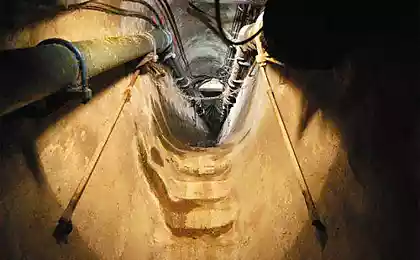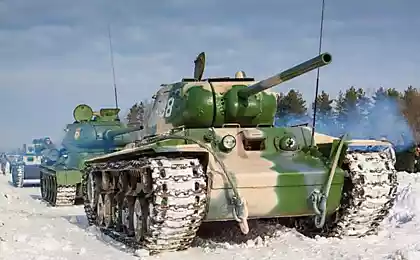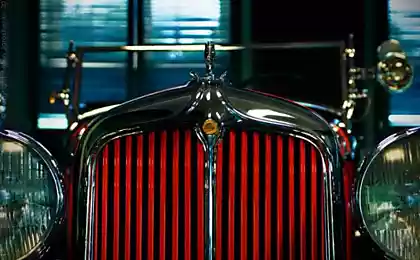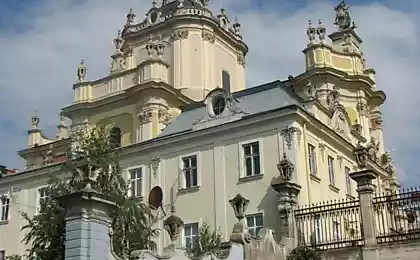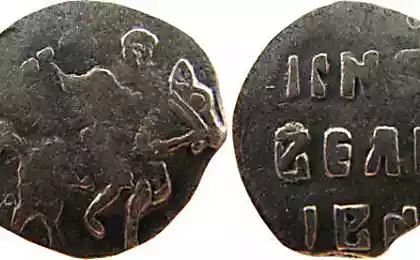896
Locomotive Museum in Nizhny Novgorod
Locomotive Museum is located near the station "Gorky-sorting" and is an open area with free entry. I expected that the state of the locomotives and the area around, because of the free entry would be very deplorable, but surprisingly everything was very clean and neat. Of course, the lights bli beaten and sometimes are present at the bottle, but overall very decent. Most brewed locomotive booths, but some can look. Almost every locomotive can climb. When I was shooting footage with tender P-36, the museum's car drove past the guard rail on which sat four good fellows. When he saw me on the train, they are very carefully watched, but calm down noticing the camera. Then a few more times they drove past, but to climb on locomotives did not interfere.
20 ph © russos
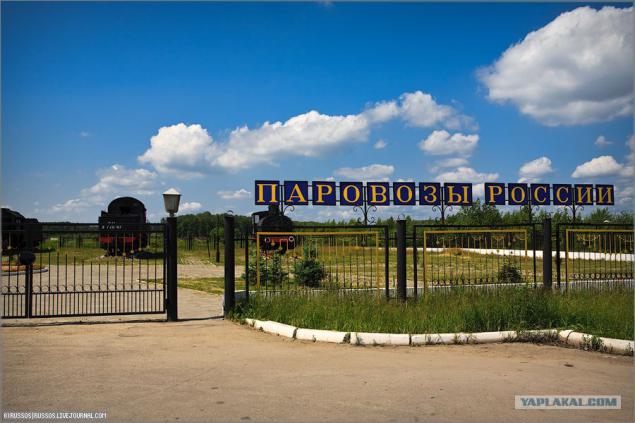
The locomotive vn-9773. Made in St. Petersburg in the early months of the 20th century. I have been in operation 69 years. In the days of the siege of Leningrad was used for the formation of trains.
Industrial steam locomotives of this series were built at the Nevsky Shipyard in St. Petersburg in the early 1900s.
Design speed of the locomotive - 40 km / h, power - 300 horsepower, efficiency - 4%.
By type of locomotive design refers to the tank engine, ie locomotives without tender - supply of fuel (oil) is stored at the locomotive.
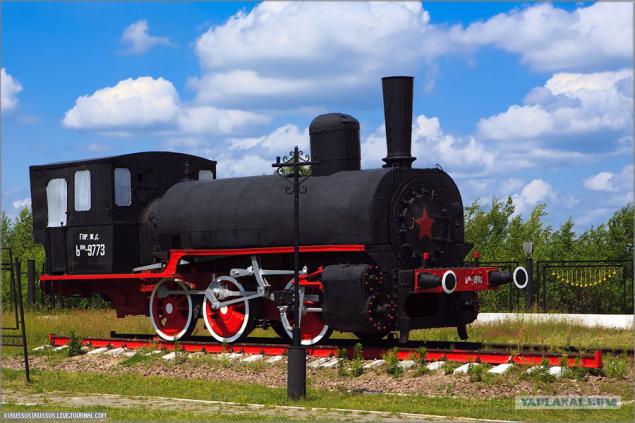
The museum's exhibits. On the left is A-0818
Steam locomotive L-0818. Freight locomotive was named after its designer Lev Sergeyevich Lebedyansky. Railroad locomotives are called "Lebedyanki." Until 1947 it was called the P series ("Victory»).
Steam locomotives A built from 1945 to 1955, Kolomna, Bryansk and Voroshilovgradsky plants. Total production in 4199 cars.
Design speed - 90 km / h. Maximum power - 2200 hp Efficiency - 7%.
Several of these locomotives are used in Russia and Ukraine for the organization of railway retro travel.
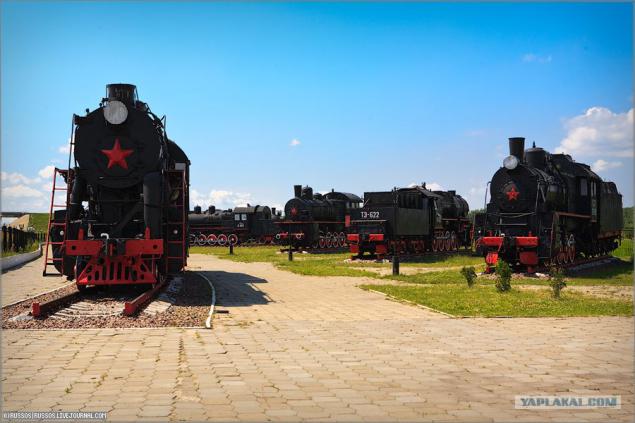
04
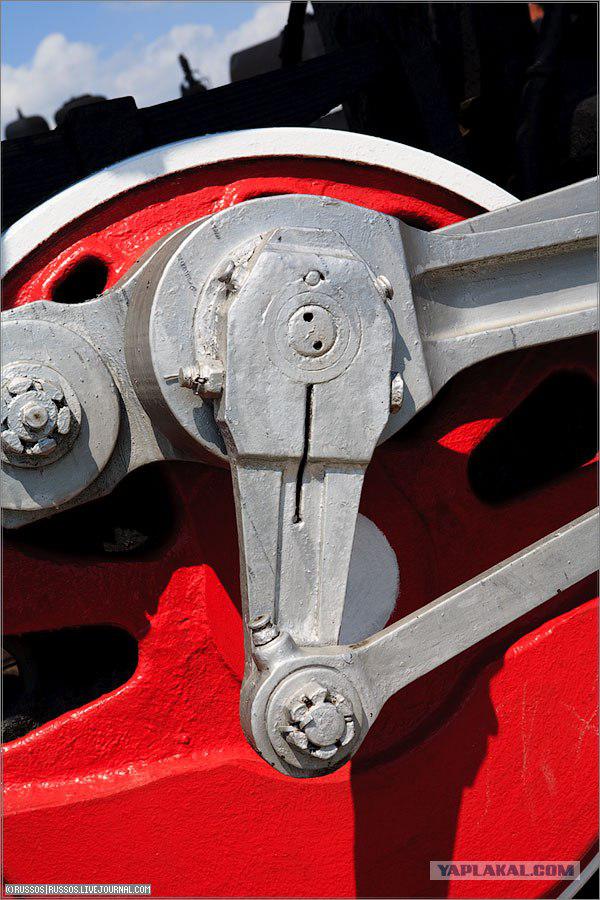
05
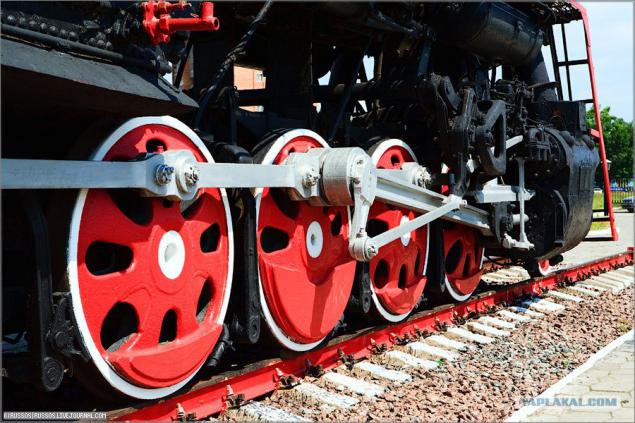
Steam locomotive TE-622.
The name stands for TE Series trophy similar to the characteristics of the domestic series E. locomotives under the original name of the BR52 produced in Nazi Germany and occupied Europe. There were more than 6,000 locomotives, 2,200 of them came on the railways of the USSR as booty or by way of reparations.
The railways of the western part of the USSR locomotives TE actively exploited until the mid-1970s, after which most of them were transferred to industrial enterprises. During operation in the USSR series TE locomotives caused the Soviet railwaymen very positive feedback. As a general lack of marked fall in output when using low-grade domestic coal. In common parlance series TE locomotives called "Teshkami" or "Frau».
Design speed of the locomotive - 80 km / h. Maximum power - 1500 hp Efficiency - 7 5%.
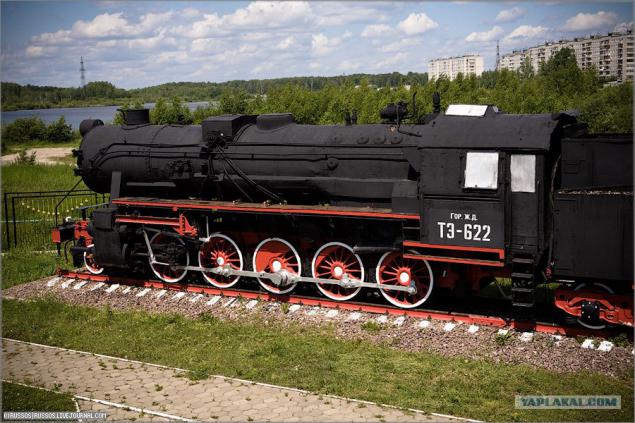
P36-0071
Passenger locomotive design and manufacture of Kolomna Plant (251 locomotive, 1950-1956).
The last steam locomotive of the series at the same time became the last steam locomotive built in the USSR. He is now at the Museum of St. Petersburg.
The longest locomotives in this series worked on the Trans-Baikal Railway. Here, they were withdrawn from service in 1974.
Design speed - 125 km / h. Maximum power - 3000 hp Efficiency - 8, 2%.
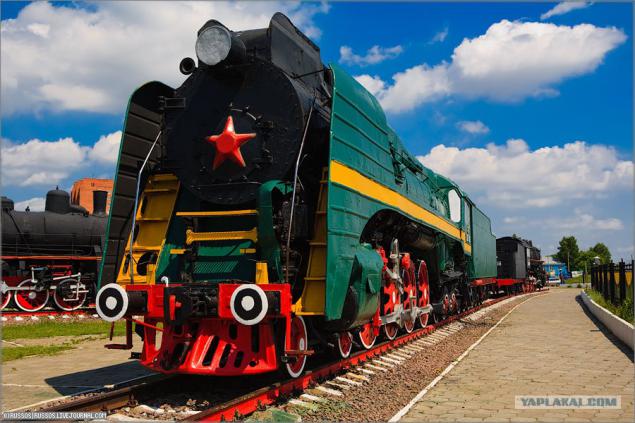
08

09
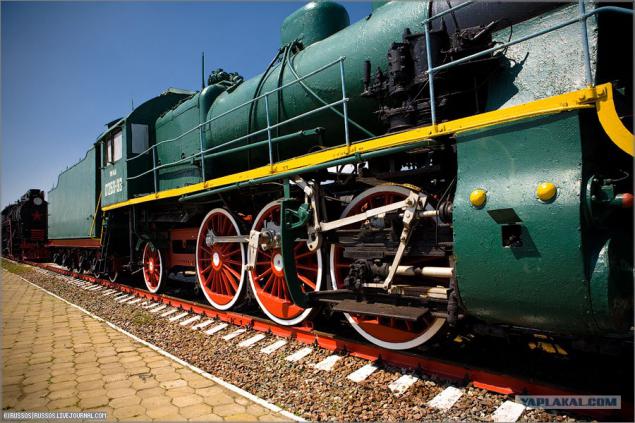
The locomotive is left EN-1. Modification of Series E, vypuskavashayasya Nevsky Shipyard in Petrograd from 1916 to 1920. Total built 63 steam locomotive.

LV-0225 and SU253-33. Drying is famous for the fact that in 1995 it swept Princess Diana, traveling in the retro train from Tula to Moscow.
Steam locomotive LV-0225. Freight locomotive manufacturing plant Voroshylovgrad based on a series of LA were built from 1952 to 1956. Total 522 locomotive.
Produced in China until the mid-1990s, the locomotive series QJ had much in common with the Soviet LP.
Design speed - 90 km / h. Maximum power - 2420 hp Efficiency - 8%.
Passenger locomotives series Su produced in the USSR from 1924 to 1940. Project locomotive developed by the Leningrad factory "Red Putilovets».
Museum locomotive built directly into the city of Gorky (formerly so-called Nizhny Novgorod) plant "Red Sormovo" produces such locomotives from 1947 to 1951 (a total of 411 locomotives).
Design speed - 115 km / h. Maximum power - 1500 hp Efficiency - 7, 8%. The locomotive passenger, so the emphasis is on speed and not on the thrust and towing weight.
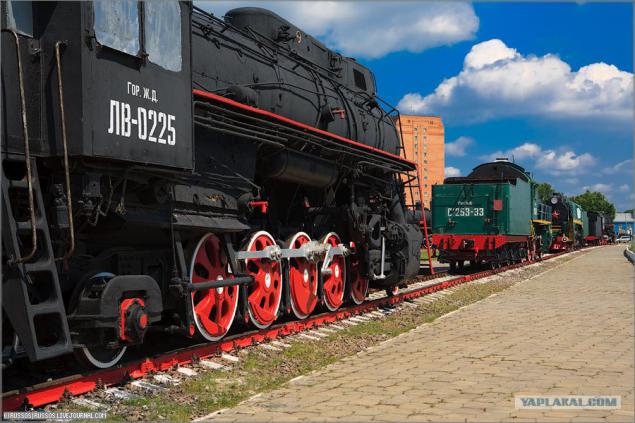
Tender locomotive LV-0225
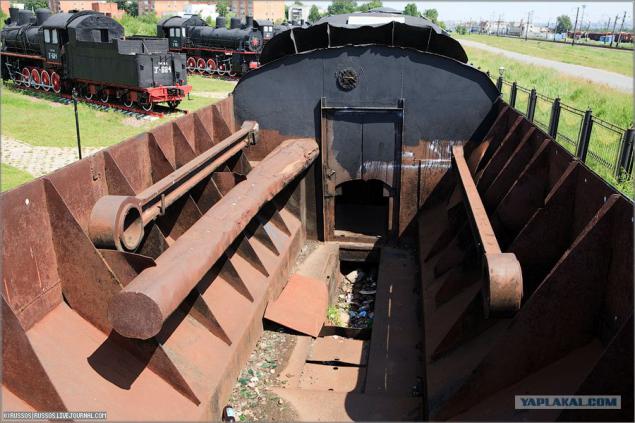
The locomotive EU684-52.
Enhanced version of the E series, is produced from 1926 to 1931 Kolomna, Luhansk, Kharkiv, Bryansk and Sormovo works. Total built 2475 locomotives.
Design speed of the locomotive - 65 km / h. Maximum power - 1500 hp Efficiency - 7%.
This particular instance was built in 1925 in Lugansk. Transport troops, food and ammunition during the Great Patriotic War in the early defense of Kerch. When the Germans cut off the peninsula from the mainland, the Red Army flooded the engine, so it does not get the enemy. After the war the locomotive picked up, dried, repaired and re-sent to work on the railways of the country.
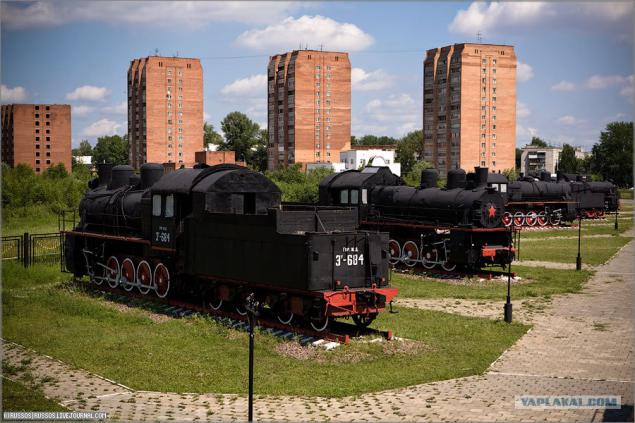
Steam locomotive 9P-18430.
Another massive shunting and industrial tank engine. It was built in the Soviet Union from 1935 to 1957. Total produced more than 3 million cars.
Design speed of the engine - 25 km / h. Maximum power - 320 hp
As of the year 2007 in museums or as a locomotive-preserved monuments of 34 steam locomotive of this series.

The locomotive EG52-39.
To quickly restore the park locomotives young Soviet state has placed large orders for locomotives E project in Sweden and Germany. Simultaneously with the Swedish order (series ESH) locomotives E series were built in Germany, the Union of Locomotive Works Lokoferbant, there are 19 factories, some of which are beginning to engage in the first steam locomotive.
Steam locomotives from Germany came to mean a series of EG. Total from 1921 to 1923 was built 700 of these locomotives.
For maximum uniformity of parts of locomotives is built on different plants, on the proposal of the Russian railway missions were made and distributed to all plants sets caliber with which checks the size of the parts associated with the assembly, without fitting work. Then, on one of the plants was assembled engine, consisting of parts made in all 19 German and one Swedish plant.
Design speed of the locomotive - 55 km / h. Maximum power - 1500 hp Efficiency - 6, 5%.
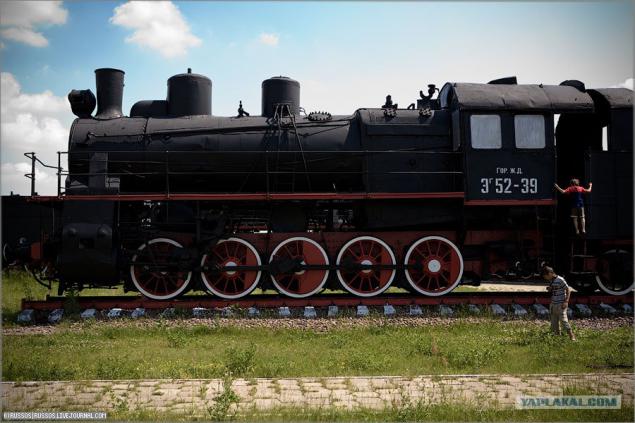
Unfortunately, almost all fittings boilers, which can get broken down and destroyed.
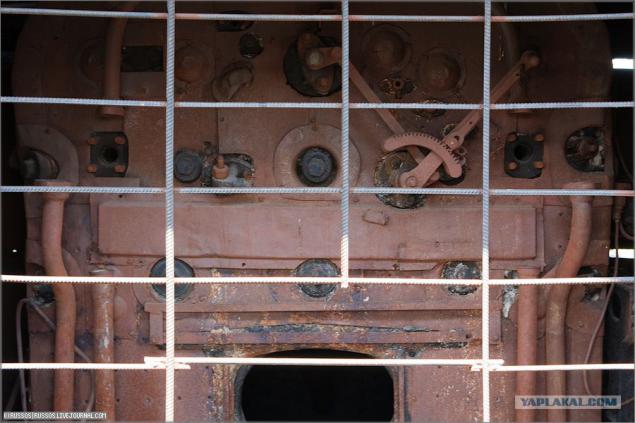
P36-0071
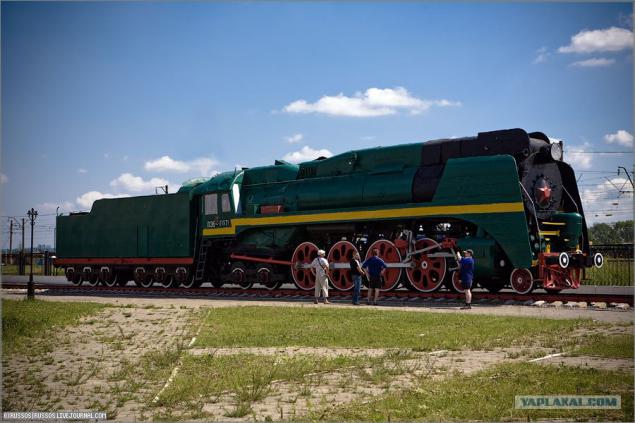
Steam locomotive TE-622.
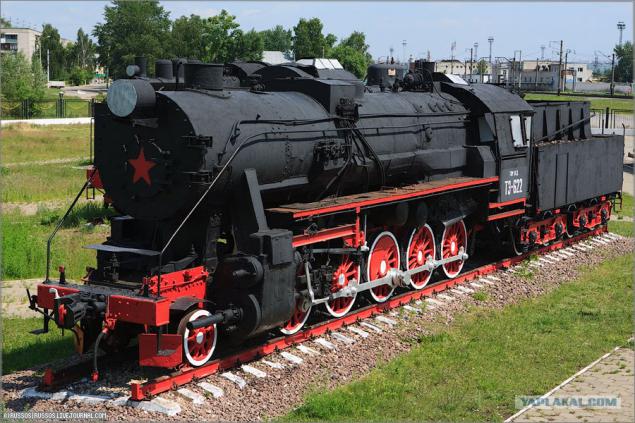
19

The locomotive EM720-07.
Upgraded Series E, is being built in 1931-1935 gg Lugansk, Kharkov, Bryansk and Sormovo works. Total produced 2694 locomotives.
To increase the thrust was increased vapor pressure in the boiler while increasing the strength of the boiler and the strengthening of certain parts of the driving mechanism.
Design speed of the locomotive - 65 km / h. Maximum power - 1800 hp Efficiency - 7%.
E Series is designed Lugansk Locomotive Works in 1910. Later locomotives built at Kharkov, Kolomna, Bryansk and Sormovo plants until 1957.
This series of locomotives is the most massive in the world - everything, including various modifications, was built about 11 thousand locomotives. This is the only example in the practice of world steam locomotive is brought in Guinness Book of Records.

Source:
20 ph © russos

The locomotive vn-9773. Made in St. Petersburg in the early months of the 20th century. I have been in operation 69 years. In the days of the siege of Leningrad was used for the formation of trains.
Industrial steam locomotives of this series were built at the Nevsky Shipyard in St. Petersburg in the early 1900s.
Design speed of the locomotive - 40 km / h, power - 300 horsepower, efficiency - 4%.
By type of locomotive design refers to the tank engine, ie locomotives without tender - supply of fuel (oil) is stored at the locomotive.

The museum's exhibits. On the left is A-0818
Steam locomotive L-0818. Freight locomotive was named after its designer Lev Sergeyevich Lebedyansky. Railroad locomotives are called "Lebedyanki." Until 1947 it was called the P series ("Victory»).
Steam locomotives A built from 1945 to 1955, Kolomna, Bryansk and Voroshilovgradsky plants. Total production in 4199 cars.
Design speed - 90 km / h. Maximum power - 2200 hp Efficiency - 7%.
Several of these locomotives are used in Russia and Ukraine for the organization of railway retro travel.

04

05

Steam locomotive TE-622.
The name stands for TE Series trophy similar to the characteristics of the domestic series E. locomotives under the original name of the BR52 produced in Nazi Germany and occupied Europe. There were more than 6,000 locomotives, 2,200 of them came on the railways of the USSR as booty or by way of reparations.
The railways of the western part of the USSR locomotives TE actively exploited until the mid-1970s, after which most of them were transferred to industrial enterprises. During operation in the USSR series TE locomotives caused the Soviet railwaymen very positive feedback. As a general lack of marked fall in output when using low-grade domestic coal. In common parlance series TE locomotives called "Teshkami" or "Frau».
Design speed of the locomotive - 80 km / h. Maximum power - 1500 hp Efficiency - 7 5%.

P36-0071
Passenger locomotive design and manufacture of Kolomna Plant (251 locomotive, 1950-1956).
The last steam locomotive of the series at the same time became the last steam locomotive built in the USSR. He is now at the Museum of St. Petersburg.
The longest locomotives in this series worked on the Trans-Baikal Railway. Here, they were withdrawn from service in 1974.
Design speed - 125 km / h. Maximum power - 3000 hp Efficiency - 8, 2%.

08

09

The locomotive is left EN-1. Modification of Series E, vypuskavashayasya Nevsky Shipyard in Petrograd from 1916 to 1920. Total built 63 steam locomotive.

LV-0225 and SU253-33. Drying is famous for the fact that in 1995 it swept Princess Diana, traveling in the retro train from Tula to Moscow.
Steam locomotive LV-0225. Freight locomotive manufacturing plant Voroshylovgrad based on a series of LA were built from 1952 to 1956. Total 522 locomotive.
Produced in China until the mid-1990s, the locomotive series QJ had much in common with the Soviet LP.
Design speed - 90 km / h. Maximum power - 2420 hp Efficiency - 8%.
Passenger locomotives series Su produced in the USSR from 1924 to 1940. Project locomotive developed by the Leningrad factory "Red Putilovets».
Museum locomotive built directly into the city of Gorky (formerly so-called Nizhny Novgorod) plant "Red Sormovo" produces such locomotives from 1947 to 1951 (a total of 411 locomotives).
Design speed - 115 km / h. Maximum power - 1500 hp Efficiency - 7, 8%. The locomotive passenger, so the emphasis is on speed and not on the thrust and towing weight.

Tender locomotive LV-0225

The locomotive EU684-52.
Enhanced version of the E series, is produced from 1926 to 1931 Kolomna, Luhansk, Kharkiv, Bryansk and Sormovo works. Total built 2475 locomotives.
Design speed of the locomotive - 65 km / h. Maximum power - 1500 hp Efficiency - 7%.
This particular instance was built in 1925 in Lugansk. Transport troops, food and ammunition during the Great Patriotic War in the early defense of Kerch. When the Germans cut off the peninsula from the mainland, the Red Army flooded the engine, so it does not get the enemy. After the war the locomotive picked up, dried, repaired and re-sent to work on the railways of the country.

Steam locomotive 9P-18430.
Another massive shunting and industrial tank engine. It was built in the Soviet Union from 1935 to 1957. Total produced more than 3 million cars.
Design speed of the engine - 25 km / h. Maximum power - 320 hp
As of the year 2007 in museums or as a locomotive-preserved monuments of 34 steam locomotive of this series.

The locomotive EG52-39.
To quickly restore the park locomotives young Soviet state has placed large orders for locomotives E project in Sweden and Germany. Simultaneously with the Swedish order (series ESH) locomotives E series were built in Germany, the Union of Locomotive Works Lokoferbant, there are 19 factories, some of which are beginning to engage in the first steam locomotive.
Steam locomotives from Germany came to mean a series of EG. Total from 1921 to 1923 was built 700 of these locomotives.
For maximum uniformity of parts of locomotives is built on different plants, on the proposal of the Russian railway missions were made and distributed to all plants sets caliber with which checks the size of the parts associated with the assembly, without fitting work. Then, on one of the plants was assembled engine, consisting of parts made in all 19 German and one Swedish plant.
Design speed of the locomotive - 55 km / h. Maximum power - 1500 hp Efficiency - 6, 5%.

Unfortunately, almost all fittings boilers, which can get broken down and destroyed.

P36-0071

Steam locomotive TE-622.

19

The locomotive EM720-07.
Upgraded Series E, is being built in 1931-1935 gg Lugansk, Kharkov, Bryansk and Sormovo works. Total produced 2694 locomotives.
To increase the thrust was increased vapor pressure in the boiler while increasing the strength of the boiler and the strengthening of certain parts of the driving mechanism.
Design speed of the locomotive - 65 km / h. Maximum power - 1800 hp Efficiency - 7%.
E Series is designed Lugansk Locomotive Works in 1910. Later locomotives built at Kharkov, Kolomna, Bryansk and Sormovo plants until 1957.
This series of locomotives is the most massive in the world - everything, including various modifications, was built about 11 thousand locomotives. This is the only example in the practice of world steam locomotive is brought in Guinness Book of Records.

Source:




